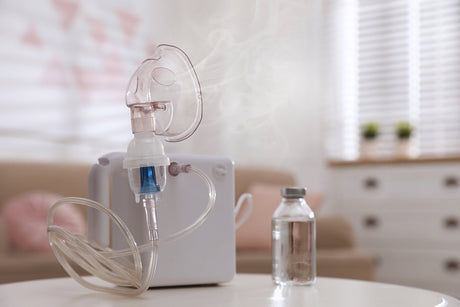If you are looking for the best thermometer for at-home use, you might be overwhelmed by the number of options available. Thermometers come in different types, such as no-contact, infrared, fever indicator, tympanic, multi-use, smart, oral, and inner ear. Each type has its advantages and disadvantages, depending on your needs and preferences.
In this article, we will help you choose the best thermometer for your situation, based on five criteria: ease of setup, responsiveness, consistency, ease of use, and data readability. We will also compare the top picks from different types of thermometers, based on the reviews and ratings from various sources.
What is a thermometer?
A thermometer is a device that measures the temperature of a body or an object. It can be used to monitor your own health or that of your loved ones, especially if you suspect a fever or an infection. A fever is a sign that your body is fighting against an illness, and it can indicate the severity and duration of your condition.
According to the Mayo Clinic, a normal body temperature ranges from 97°F to 99°F, depending on the time of day and the method of measurement. A fever is usually defined as a temperature of 100.4°F or higher.
However, not all thermometers are created equal. Some are more accurate, faster, easier to use, or more comfortable than others. Some also have additional features, such as memory recall, fever alert, app connectivity, or backlight display.
To help you find the best thermometer for at-home use, we have selected one thermometer of every type to highlight its key features and things you should consider before buying one.
Types of Thermometers
There are many types of thermometers available on the market, but they can be broadly classified into two categories: contact and non-contact.
Contact thermometers require direct contact with the body part that is being measured, such as the mouth, ear, armpit, or rectum. They are usually more accurate and consistent than non-contact thermometers, but they can also be more invasive and uncomfortable.
Non-contact thermometers do not require direct contact with the body part that is being measured. They use infrared technology to measure the temperature of the skin or the eardrum. They are usually more convenient and hygienic than contact thermometers, but they can also be affected by external factors such as ambient temperature or sweat.
Here are some of the most common types of thermometers and their pros and cons:
No-Contact Thermometer
A no-contact thermometer is a type of non-contact thermometer that measures the temperature of the forehead without touching it. It is also known as a forehead thermometer or a temporal artery thermometer.
Pros:
- It is very easy to use; you just need to point it at the forehead and press a button.
- It is very hygienic; you do not need to clean it after each use or worry about cross-contamination.
- It is very comfortable; you do not need to insert it into any body part or hold it under your tongue.
- It is very fast; it gives you a reading in seconds.
- It is suitable for all ages; you can use it on babies, children, adults, or elderly people.
Cons:
- It can be less accurate than other types of thermometers; it can be affected by external factors such as ambient temperature, sweat, hair, or glasses.
- It can be more expensive than other types of thermometers; it usually requires batteries to operate.
- It can have limited memory; it may not store previous readings or have an app connectivity feature.
The best Infrared Thermometer
An infrared thermometer is another type of non-contact thermometer that measures the temperature from the surface of the forehead or an object. It's similar to the no-contact thermometer but can be used to measure the temperature of objects, making it versatile.
Pros:
- Versatile usage allows for measuring body temperature and the temperature of objects and liquids.
- Non-invasive and hygienic, reducing the risk of cross-contamination.
- Quick readings, often within seconds, making it convenient for repeated use.
- Suitable for all ages, including infants and the elderly.
Cons:
- External factors like room temperature and forehead sweat can affect accuracy.
- Typically more expensive than traditional thermometers due to advanced technology.
- May require calibration or specific operating conditions to maintain accuracy.
Choosing a Tympanic (Ear) Thermometer
Tympanic thermometers measure the temperature inside the ear canal, offering a balance between ease of use and accuracy. They're particularly suited for children over six months old and adults.
Pros:
- Fast and accurate readings, typically within a few seconds.
- Less invasive than rectal thermometers, making them more comfortable for children and adults.
- Not significantly affected by external environmental factors.
Cons:
- Requires correct placement in the ear canal, which can be challenging with small children or for individuals unfamiliar with the device.
- Ear wax or small ear canals may affect accuracy.
- Generally more expensive than digital stick thermometers.
The Best Digital Stick Thermometer
Multi-use thermometers are the traditional digital stick thermometers that can be used orally, rectally, or under the arm. They're versatile and affordable.
Pros:
- Versatile and can be used for all age groups.
- More affordable than most other types of thermometers.
- Easy to clean and maintain.
Cons:
- Slower readings compared to infrared or tympanic thermometers.
- Oral and rectal measurements can be uncomfortable for some individuals.
- Can be less convenient for quick, repeated measurements.
The Best Smart Thermometers
Smart thermometers connect to your smartphone or tablet via Bluetooth or Wi-Fi, offering advanced features like symptom tracking, medication reminders, and health advice.
Pros:
- Advanced features for comprehensive health monitoring.
- Ability to track symptoms and temperatures over time for multiple family members.
- Offers personalized health advice and reminders for medication.
Cons:
- More expensive than basic thermometers.
- Requires a compatible smartphone or tablet.
Our Choice: The Yuwell Infrared Forehead Thermometer
The Yuwell Infrared Forehead Thermometer offers a perfect blend of convenience, accuracy, and hygiene for monitoring body temperatures at home. Utilizing advanced infrared technology, this non-contact thermometer provides quick, precise temperature readings without the need for physical touch, reducing the risk of cross-contamination. Ideal for all ages, from infants to the elderly, it ensures a stress-free experience for both the user and those being measured. With its easy-to-read display and rapid response time, the Yuwell thermometer caters to your family's health needs efficiently. Whether you're checking for fever in the middle of the night or managing the health of a loved one, its reliability and simplicity make it an indispensable tool in your healthcare arsenal.
Choosing The Best Thermometer for your family.
Choosing the best thermometer for home use depends on various factors, including the age of the user, the preferred method of measurement, and the need for additional features. Whether you prefer the non-invasive convenience of a no-contact infrared thermometer, the accuracy of a tympanic thermometer, the versatility of a multi-use digital stick, or the advanced features of a smart thermometer, there's an option available to meet your needs. Remember to consider ease of use, responsiveness, consistency, and data readability.
FAQS
How do I choose the best thermometer for my needs?
When choosing a thermometer, consider the age of the person being measured, preferred measurement location (oral, ear, forehead, etc.), and specific features you may find useful (such as memory function, fever alerts, or app connectivity). For infants, a rectal or forehead thermometer is recommended for accuracy, while older children and adults may prefer oral or ear thermometers for convenience.
How accurate are forehead (no-contact) thermometers?
Forehead thermometers are generally accurate when used correctly. However, their accuracy can be influenced by external factors like sweating, drafts, and direct sunlight on the forehead. It's important to follow the manufacturer's instructions closely for the most accurate readings.
Can I use the same thermometer for different parts of the body?
Yes, multi-use digital stick thermometers can be used for oral, rectal, or axillary (underarm) measurements. However, it is crucial to clean and disinfect the thermometer thoroughly between uses and to designate a specific thermometer for rectal use to prevent cross-contamination.
How often should I calibrate my thermometer?
The need for calibration depends on the type of thermometer and its usage frequency. Infrared and ear thermometers might require periodic calibration to maintain accuracy. It's best to refer to the manufacturer's guidelines. If you notice inconsistencies in readings or if the thermometer has been dropped or damaged, it may also need recalibration.
Why does my thermometer give different readings at different times?
Body temperature naturally fluctuates throughout the day, being lower in the morning and higher in the late afternoon and evening. Measurement location, recent activity, eating, drinking, and how the thermometer is used can also affect readings. Ensure you're following the thermometer's instructions for use to get consistent readings.
How do I clean my thermometer?
Cleaning methods vary by thermometer type. Generally, alcohol wipes can be used to clean the tip of digital stick and ear thermometers. Forehead thermometers may only require a soft cloth to wipe the sensor. Always refer to the manufacturer's cleaning instructions to avoid damaging the device.
Are infrared thermometers safe to use on babies and children?
Yes, infrared thermometers are safe for all ages. They do not emit radiation; instead, they detect the infrared energy emitted by the body. They're particularly useful for children and babies because they provide a non-invasive way to take temperatures quickly and accurately.
How can I ensure the most accurate reading from my thermometer?
To ensure accuracy, wait at least 15 minutes after eating, drinking, exercising, or bathing before taking a temperature. Make sure the measurement site is clean and dry, and follow the thermometer's instructions for placement and duration.
As a leading supplier of durable and home medical equipment (DME and HME), ApriaDirect sources and distributes a wide range of treatment solutions, including assistive home medical equipment and monitoring solutions.
We're here to support you as you work toward your improved health and well-being. We strive to meet your ever-evolving healthcare requirements with individualized attention and premium quality treatment solutions.
Looking to add medical supplies? Browse our premium solutions and let us help you get the most out of every day.
Looking for advice? Our helpful agents are on call at (800) 780-1508 between 8:00 am - 10:00 pm EST daily. Get in touch today.





